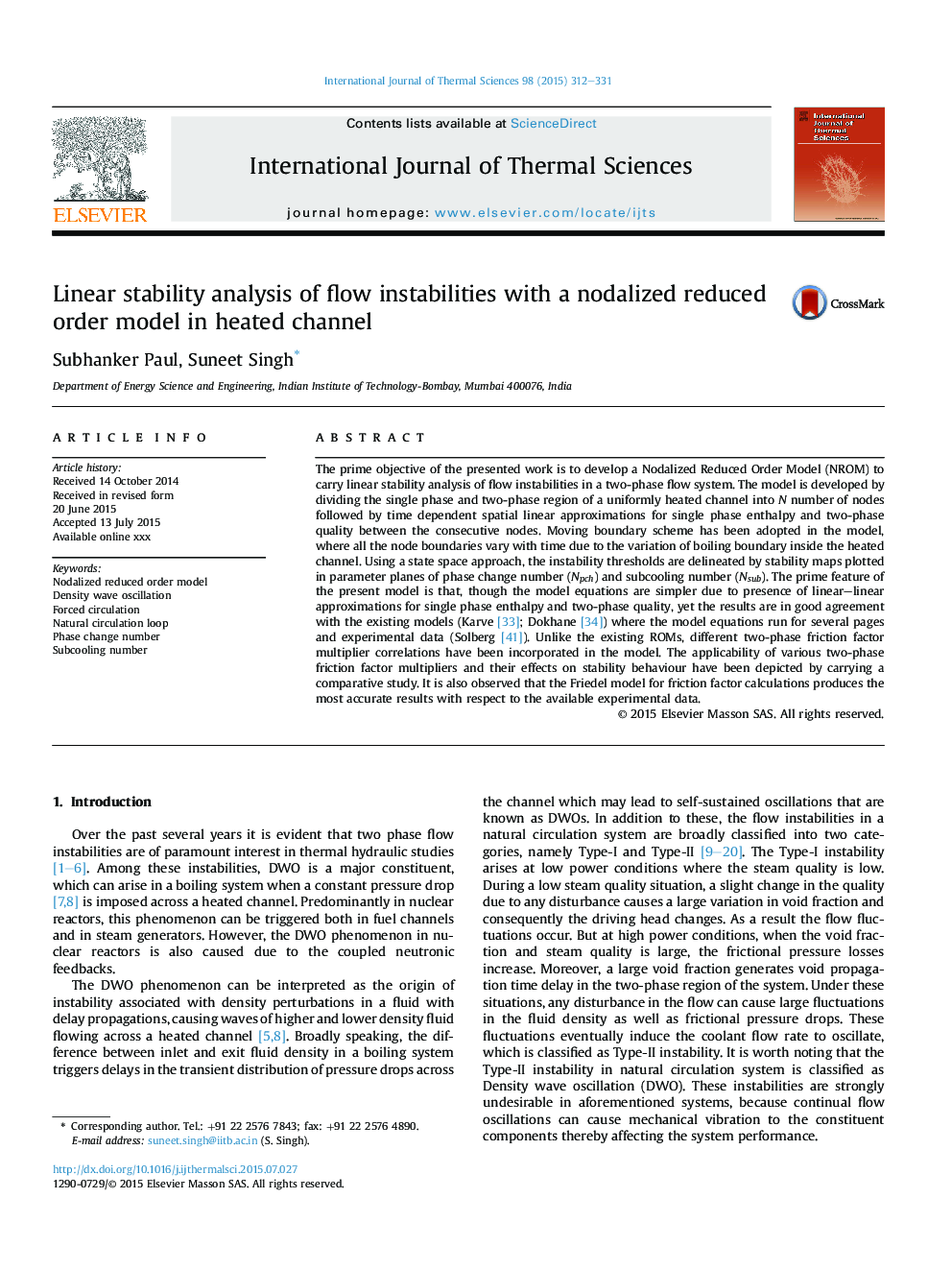| Article ID | Journal | Published Year | Pages | File Type |
|---|---|---|---|---|
| 667999 | International Journal of Thermal Sciences | 2015 | 20 Pages |
Abstract
The prime objective of the presented work is to develop a Nodalized Reduced Order Model (NROM) to carry linear stability analysis of flow instabilities in a two-phase flow system. The model is developed by dividing the single phase and two-phase region of a uniformly heated channel into N number of nodes followed by time dependent spatial linear approximations for single phase enthalpy and two-phase quality between the consecutive nodes. Moving boundary scheme has been adopted in the model, where all the node boundaries vary with time due to the variation of boiling boundary inside the heated channel. Using a state space approach, the instability thresholds are delineated by stability maps plotted in parameter planes of phase change number (Npch) and subcooling number (Nsub). The prime feature of the present model is that, though the model equations are simpler due to presence of linear-linear approximations for single phase enthalpy and two-phase quality, yet the results are in good agreement with the existing models (Karve [33]; Dokhane [34]) where the model equations run for several pages and experimental data (Solberg [41]). Unlike the existing ROMs, different two-phase friction factor multiplier correlations have been incorporated in the model. The applicability of various two-phase friction factor multipliers and their effects on stability behaviour have been depicted by carrying a comparative study. It is also observed that the Friedel model for friction factor calculations produces the most accurate results with respect to the available experimental data.
Keywords
Related Topics
Physical Sciences and Engineering
Chemical Engineering
Fluid Flow and Transfer Processes
Authors
Subhanker Paul, Suneet Singh,
